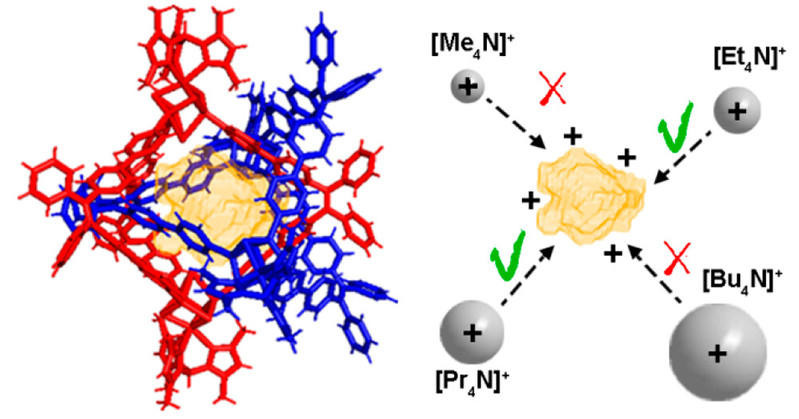Self-Assembly of Cluster-Mediated 3D Catenanes with Size-Specific Recognition Behavior
Hui-Min Yu1,2, Ming-Hao Du1*, Jie Shu3, Yun-Hu Deng1, Ze-Ming Xu1, Zhi-Wen Huang1, Zheng Zhang1,Bingbing Chen5,*(陈兵兵) ,Pierre Braunstein4, and Jian-Ping Lang1,2*(郎建平)
1College of Chemistry, Chemical Engineering and Materials Science, Soochow University, Suzhou 215123 Jiangsu, China
2State Key Laboratory of Organometallic Chemistry, Shanghai Institute of Organic Chemistry, Chinese Academy of Sciences, Shanghai 200032, China
3 Analysis and Testing Center, Suzhou 215123 Jiangsu,China
4 Institut de Chimie (UMR 7177 CNRS), Université de Strasbourg, 67081 Strasbourg, France
5 Department of Energy Science and Engineering, Nanjing Tech University, Nanjing 210009
Jiangsu, China
J. Am. Chem. Soc. 2023, 145, 25103−25108
Abstract:Although interlocked three-dimensional molecules display unique properties associated with their spatial structures, their synthesis and study of their host−guest properties remain challenging. We report the formation of a novel [2]catenane, [Et4N]@[(Tp*WS3Cu3Cl)2 (cis-bpype)3]2(OTf)5 ([Et4N][1](OTf)5), by self-assembly of the cluster node [Tp*WS3Cu3Cl]+ and the organic linker (Z)-1,2-diphenyl-1,2-bis(4-(pyridin-4-yl)phenyl) ethene (cis-bpype). Single-crystal X-ray and NMR analyses established that [1]4+ is formed by the interpenetration of two cluster-organic cages. Unique cation-in-cation host−guest complexes were observed with this catenane. The crystalline, empty catenane was formed by taking advantage of the electrostatic repulsion-induced weak binding of the host. Encapsulation experiments also reveal that the empty catenane can adaptively encapsulate cations such as [Et4N]+ and [Pr4N]+ in the cross cavity but is unable to encapsulate [Bu4N]+ and [Me4N]+ , although the size of the latter is compatible with that of the cavity. Theoretical calculations and volume analysis allow to unravel the ingenious role of catenane structures and the interplay between electrostatic repulsion and attractive noncovalent interactions for size-specific recognition behavior in host-guest systems involving species with similar electric charges.

链接://pubs.acs.org/doi/10.1021/jacs.3c11398